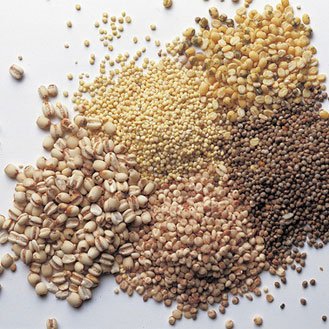Depending on the weight.
Proteins make up our cells, are used to make muscle and contribute to the overall functioning of the body. To be fit , you need to consume about 1g per kilogram of weight per day. Thus, if you weigh 60 kg, you must eat 60 g of protein daily.
Can vegetable proteins be enough to cover our daily needs?
Yes, but it does require some adjustments: our body needs the eight essential amino acids to properly assimilate proteins. However, if each of these eight amino acids are present in animal proteins , this is rarely the case in plants. To avoid deficiencies and consume enough, it is therefore essential to diversify the sources.
We blend
When we say vegetable protein, we think of pulses and that's right. Lentils , chickpeas and other red beans are relatively well supplied with proteins, with a content of 8 g per 100 g (as an indication, 100 g of meat or fish or 2 eggs contain between 18 and 25 g). The good reflex to increase our contributions: to associate them with the cereals ( chickpeas semolina, for example), also rich in proteins. This mixture provides all the necessary amino acids.
We consume cereals
Regarding cereals , the choice is vast: pasta, rice, corn, but also oats, wheat, millet, spelled, barley, buckwheat, rye, kamut or quinoa ... But if they all contain protein, their content varies significantly from one product to another (13 g per 100 g for pasta and semolina, against 7 g only for rice). For the small hollow or the dessert, one favors the oleaginous fruits ( walnuts , hazelnuts and almonds ).
The superstar soy
Fat consumers of soy products cut the risk of having a heart problem by three. An effect that is unfortunately not demonstrated in the same way for men. Soy contains all the essential amino acids, with an excellent protein content (up to 35% of its dry weight). Same thing for all its derivatives: tofu , of course, but also steak , milk and soy yogurt , or tempeh (kind of cake obtained by fermentation of seeds).
Read also



